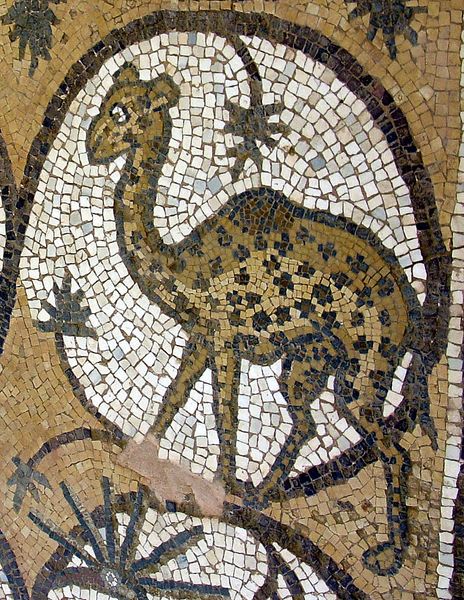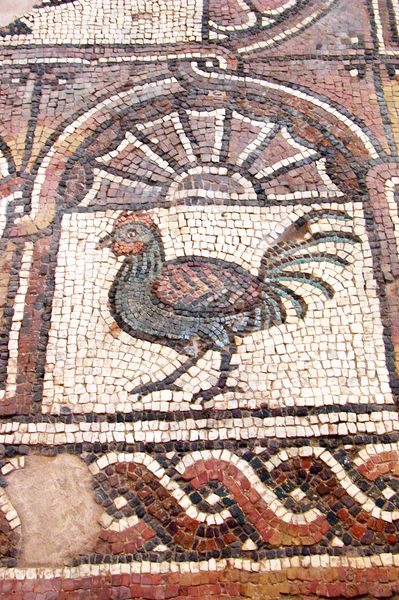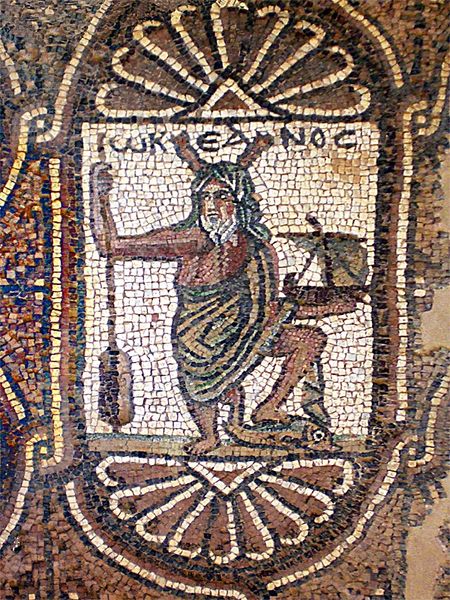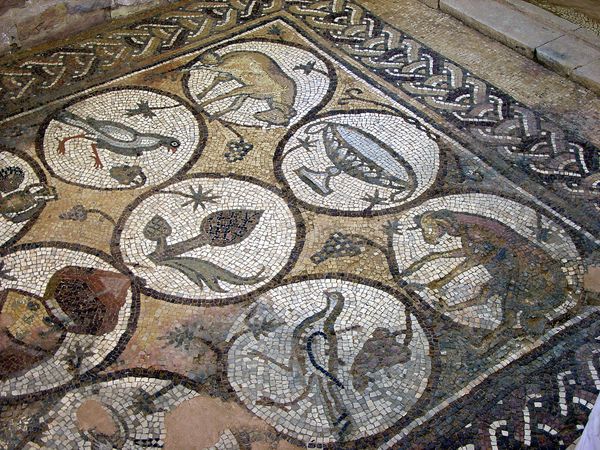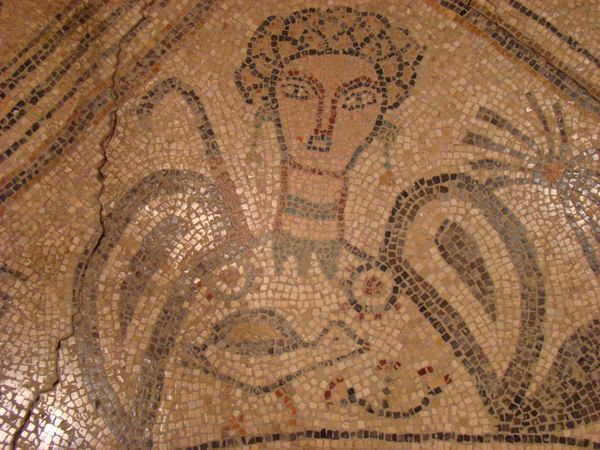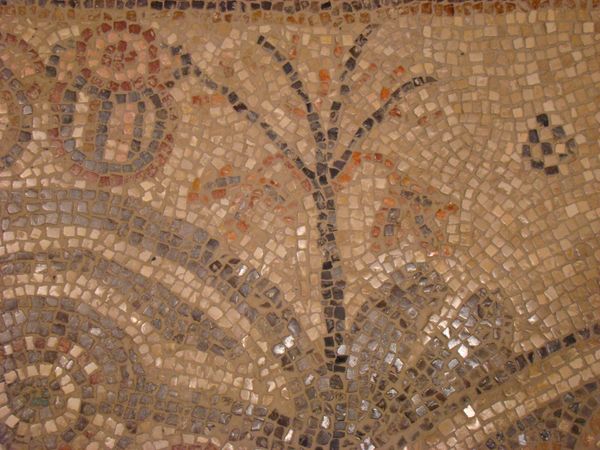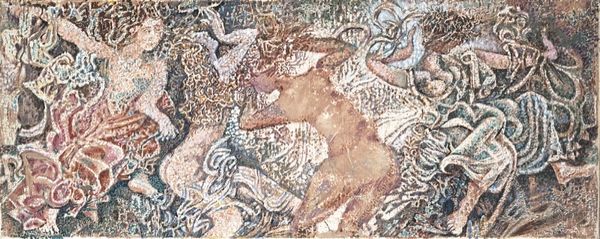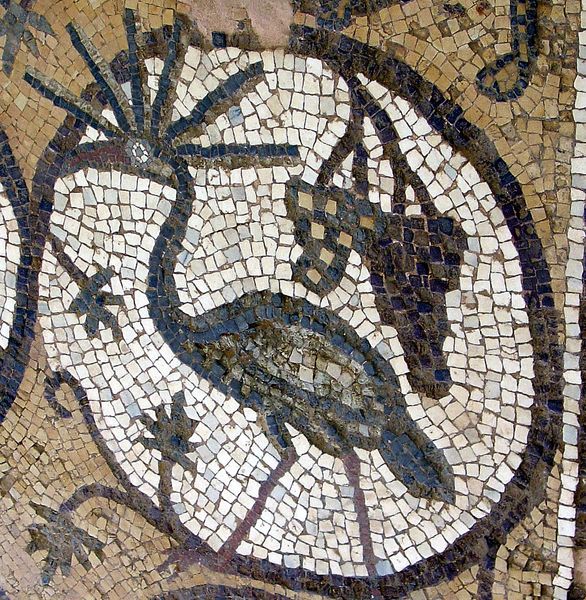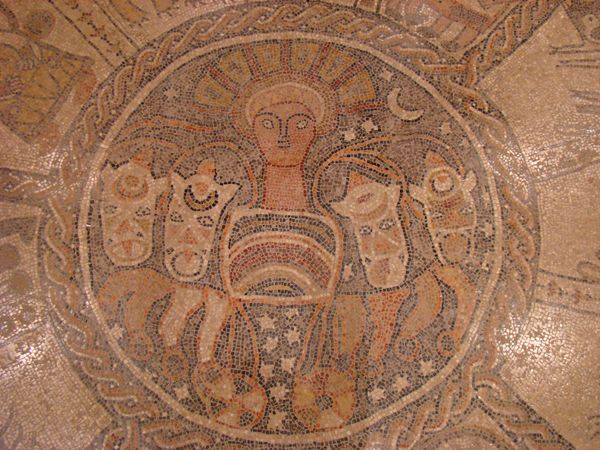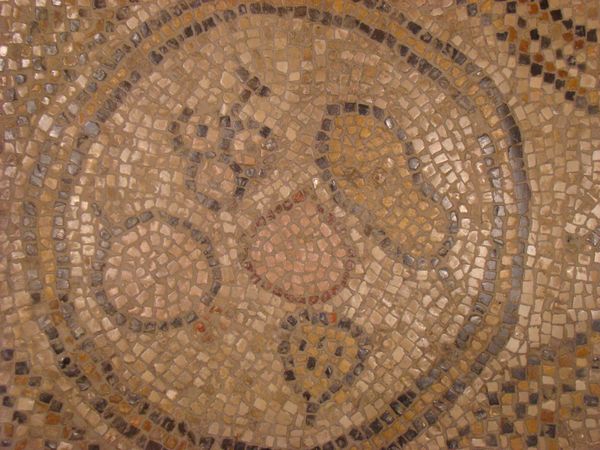
mosaic
#
mosaic
#
byzantine-art
#
sculpture
#
figuration
#
geometric
Copyright: Public domain
Curator: What strikes you first about this mosaic? Editor: Its utter calm. The earthy colors are muted and balanced, creating a really serene, grounded effect. I could just get lost in those little stone tesserae forever! Curator: The work is known as the 'Mosaic of Deer in Petra Church,' dating to around 550 AD, it stands as an example of Byzantine artistry, carefully assembled using tiny mosaic pieces. Found in Petra, it reveals much about early Christian art in the region. Editor: Petra, wow, the same Petra from Indiana Jones! It adds a whole other dimension. You see this isolated animal represented with its beautiful circle. It reminds me about something precious held against a dangerous time! Is the figure isolated or is part of a larger scene or story? Curator: Historical analysis points to it probably forming part of a much bigger composition of flora and fauna, representative of Paradise as often portrayed on Byzantine floors. Its position in a church certainly adds a religious layer; some believe deer symbolized Christian converts, their thirst for God likened to a deer's thirst for water. Editor: That’s profound—a symbolic journey towards faith, embedded within this gorgeous visual! Curator: Precisely. Considering this mosaic within its historical context, it embodies the blend of classical artistic techniques and Christian symbolism prevalent in Byzantine art during the period. These types of mosaics helped solidify complex Christian ideas to a mostly illiterate audience. Editor: Incredible how art transforms into narrative. Knowing it's not *just* decorative makes a big difference. It seems more intentional, almost secretive, that deer suddenly isn't just a deer anymore! This shifts my understanding from aesthetics to historical. Thanks. Curator: It works vice versa. Appreciating art from an art-historical approach helps enhance our interpretation as a form. A lovely connection! Editor: Definitely! Thanks for lighting my path and for helping me to connect the deer in the stone to the history of civilization.
Comments
No comments
Be the first to comment and join the conversation on the ultimate creative platform.
